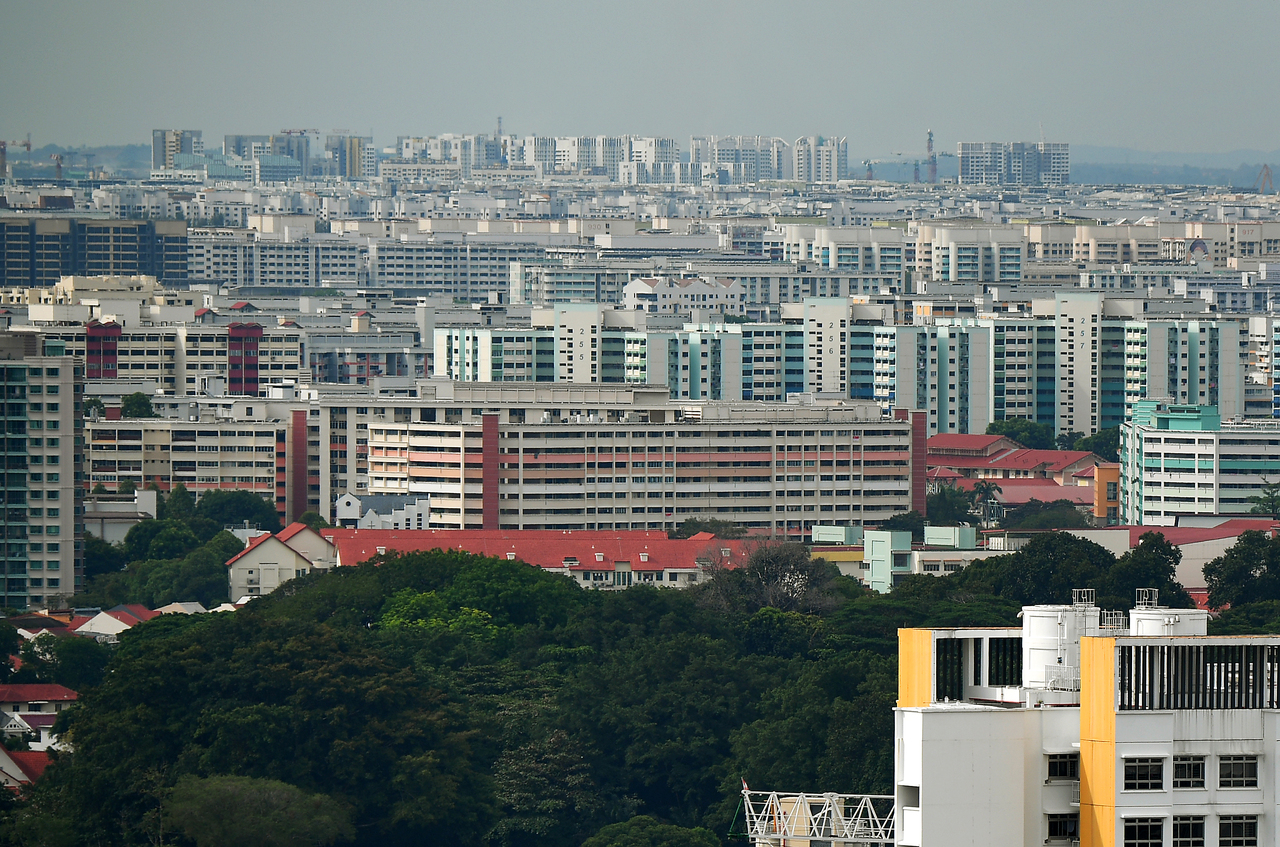Self-sufficient 'bubbles' and other strategies to curb future outbreaks in Singapore
Sign up now: Get ST's newsletters delivered to your inbox

In the event of a disease outbreak, the regions can be isolated separately, instead of having the whole of Singapore on isolation.
ST PHOTO: KUA CHEE SIONG
Follow topic:
Singapore may need to think about dividing itself into regions and creating self-sufficient "bubbles" that can be contained and isolated, to better prepare for a future contagious disease outbreak, suggested the chief executive of the Housing & Development Board yesterday.
Dr Cheong Koon Hean was speaking about how the coronavirus pandemic has forced a rethink of urban planning at a forum on how Singapore can bounce back from the Covid-19 crisis and emerge more resilient in future.
It was organised by the Institute of Policy Studies (IPS), which is part of the National University of Singapore's Lee Kuan Yew School of Public Policy.
With social distancing being one of the key strategies to hold back the transmission of the disease, cities have had to rethink how to space out as much as possible.
Giving an idea of how this may be done in the longer term, Dr Cheong said this will involve decentralising and localising. She painted a Singapore divided up into self-sufficient regions, with jobs and amenities located close to neighbourhoods and parks within walking distance of people's homes, reducing the need for travel. This will help to thin out crowded areas like the city centre and commercial centres, and also reduce travel on public transport.
In the event of a disease outbreak, the regions can be isolated separately, instead of having the whole of Singapore on isolation, allowing for different regions to link up, akin to the travel bubbles countries are now looking at.
The good news is Singapore is "pretty much on the way to doing some of these things", said Dr Cheong, having already moved towards decentralisation in developing regional centres and organising HDB towns around shops, parks and amenities.
With population density having become a factor in the spread of Covid-19, IPS deputy director of research Gillian Koh, who moderated the session, asked if Singapore should review its population planning parameter of 6.9 million.
Dr Cheong said a country can create a "healthy density" and reduce crowdedness even with limited land. For instance, having more co-working spaces instead of office buildings, with working from home becoming more common. But she cautioned against "throwing the baby out with the bathwater", saying density is not all bad as cities become more dynamic when people come together.
Dr Neo Boon Siong, former dean of the Nanyang Technological University's business school and another panellist, said what matters more is not the absolute population number itself, but whether the conditions allow people to have a high quality of life.
Associate Professor Vernon Lee, director of communicable diseases at the Ministry of Health, who was also on the panel, said density is only one of the factors that contribute to coronavirus transmission. He cited how places like Hong Kong and South Korea, which are very dense, had managed to control the spread of the virus, while other locations where the population is more spread out had experienced huge epidemics.
Also, while the population number had stayed the same during the circuit breaker period, infection numbers had gone down significantly, highlighting how a change in behaviour and the ways people interact may be more important.
"We need to take all this into consideration before we say cut density and it will solve our problems. That is too narrow a view and won't solve the problems so easily," he said.
Also on the panel were Singapore Management University Behavioural Sciences Institute director David Chan and restaurateur Loh Lik Peng of Unlisted Collection.
The article has been edited for clarity.

